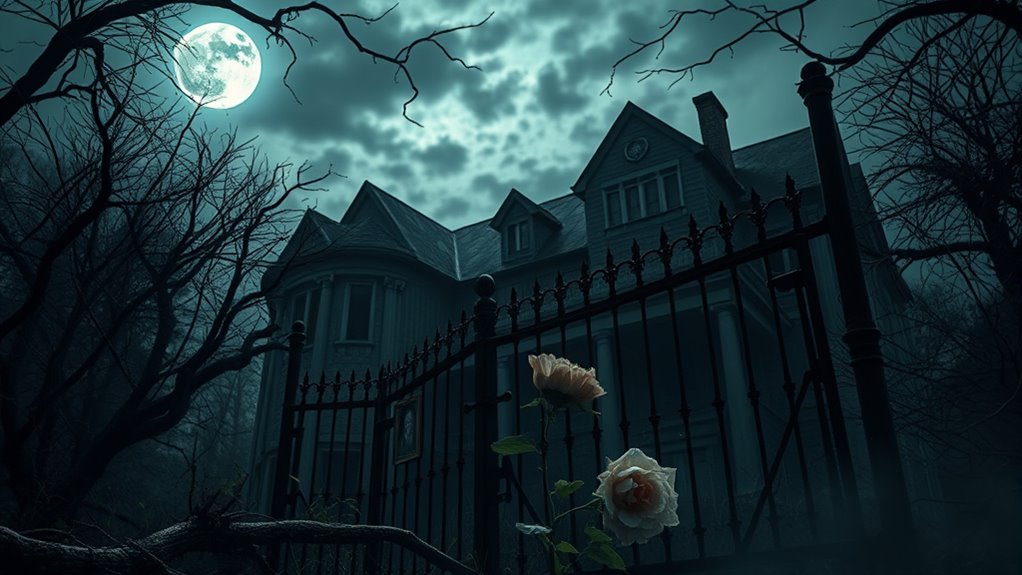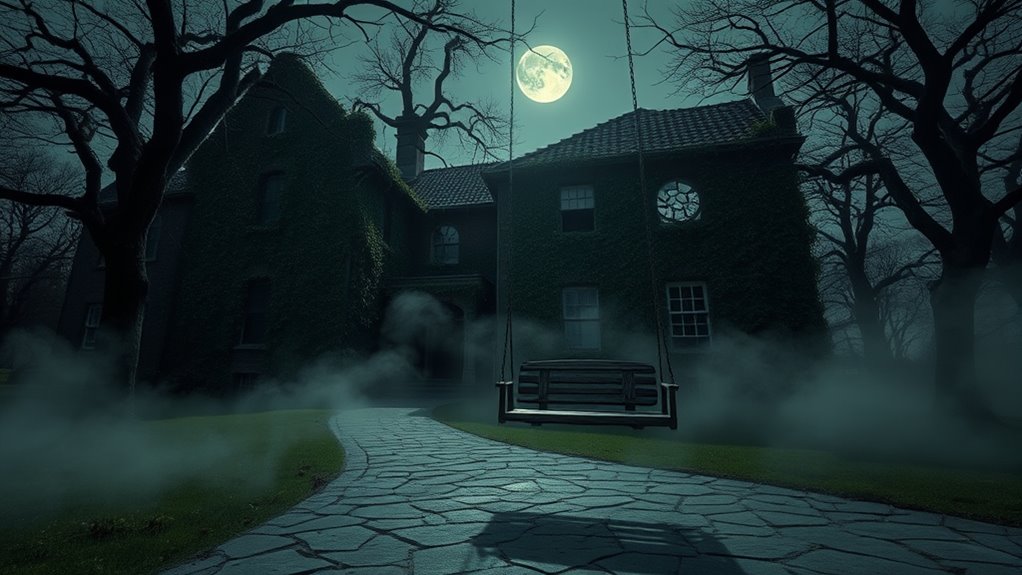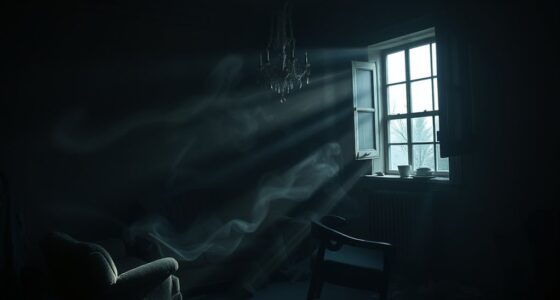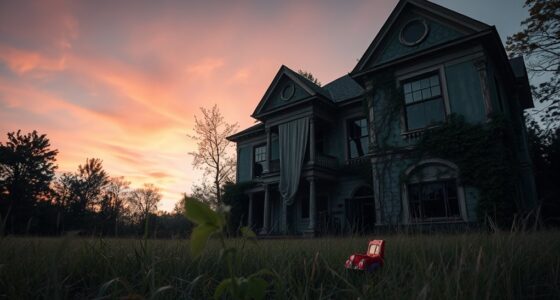A place feels haunted due to the intense energy left behind by tragic events or unresolved emotions. As you enter, you might sense a heavy presence or hear whispers from the past. Old, decaying structures can amplify feelings of fear, while dark corners and eerie sounds confuse your senses. Personal beliefs and the atmosphere shape your experience, creating a connection to previous lives. There’s much more to uncover about what truly makes a place haunted.
Key Takeaways
- Unsettling presences and emotional attachments to tragic events can trap spirits in haunted locations.
- Historical significance and the decay of structures evoke fear and connect to past narratives.
- Cultural beliefs and personal expectations shape individual experiences of hauntings.
- Environmental factors like dark corners and unexpected sounds increase feelings of unease.
- Spirit attachments often reflect emotional ties and choices made during life, influencing posthumous behavior.

When you step into a place rumored to be haunted, you can often feel an unsettling presence lingering in the air. It’s as if the walls themselves are whispering secrets of tragic events that have transpired within. These places are typically tied to violent deaths or unresolved emotional attachments, creating what many call “psychic energy.” This energy can feel palpable, almost as if it traps spirits in the location, making them unwilling or unable to leave.
Stepping into a haunted place reveals whispers of tragedy, where unresolved emotions and psychic energy linger in the air.
Historical context is essential in understanding why some locations are deemed more haunted than others. Older structures, with their creaky floorboards and peeling wallpaper, often evoke a sense of fear. The very decay of these buildings serves as a reminder of the past and the tragedies that have unfolded there. You might find yourself imagining the lives lived within those walls, deepening your connection to the haunting narrative. The influence of community engagement can also shape how these stories are shared and passed down through generations.
Cultural beliefs also play a significant role in how we perceive these haunted spaces. If you’ve ever talked to someone who’s had a ghostly encounter, you know they often bring their own expectations and fears into the experience. Your predisposition towards believing in the paranormal can heighten your senses, making you more attuned to the eerie sounds that echo through empty hallways or the cold spots that send shivers down your spine. This sense of anticipation can amplify your emotional response, leaving you wondering if you really aren’t alone.
Environmental factors contribute to the overall feeling of unease you might experience. Dark corners, confusing layouts, and the unexpected creaks of an old building can disorient you, making you feel vulnerable. This vulnerability can lead to a heightened sense of fear, especially if you’re alone or in a group that shares your apprehensions.
Interestingly, the concept of free will among spirits suggests that their attachment to a location isn’t simply a result of external forces. Instead, it’s believed to be influenced by emotional ties, conscious choices made based on the experiences they’d while alive. This idea often surfaces during ghost hunting investigations, adding another layer to your understanding of hauntings. Furthermore, much like how proper priming ensures smooth paint flow in airless paint sprayers, preparing oneself mentally before entering a haunted space can enhance your experience and minimize fear.
As you navigate these haunted spaces, you’ll find yourself grappling with the complexities of past lives, emotional attachments, and the lingering energy that binds them to the present.
Frequently Asked Questions
Why Does a Place Become Haunted?
A place becomes haunted when tragic events unfold, often tied to violent deaths or unresolved emotional ties.
You might feel the lingering energy of past experiences, as spirits seek closure or revenge.
Cultural beliefs and historical contexts shape how you perceive these hauntings, influencing your emotions in the space.
Environmental factors, like eerie architecture or unsettling ambiance, can amplify your feelings, making you more susceptible to the idea that a location is haunted.
How Do You Know a Place Is Haunted?
When you walk into a place that feels like a forgotten whisper, you might sense it’s haunted.
You’ll notice cold spots where the air feels thick, hear strange noises echoing like distant memories, or catch fleeting shadows from the corner of your eye.
You may feel an unsettling presence, as if someone’s watching.
Flickering lights and moving objects can make your heart race, hinting that the past still lingers, waiting to be discovered.
What Causes a Haunting?
When you think about what causes a haunting, consider the emotional energy tied to tragic events. Often, violent deaths or unresolved trauma leave a lingering presence in a location.
You might notice how personal beliefs shape your perception of these experiences. Environmental factors, like old cemeteries or abandoned buildings, can heighten your awareness of the supernatural, making you more susceptible to feelings of fear and curiosity about the spirits that may linger there.
What Makes Places Creepy?
When you step into a place that feels like it’s straight out of a horror movie, you can’t shake that uneasy feeling.
The isolation, crumbling walls, and strange sounds trigger your instincts, making you feel vulnerable.
Confusing layouts and dark corners heighten your anxiety, while historical elements whisper tales of past tragedies.
Add in odd smells or sudden cold spots, and it’s no wonder you feel a chill run down your spine.
Conclusion
In summary, whether it’s the tragic history or lingering energy, haunted places captivate your imagination. Did you know that nearly 45% of Americans believe in ghosts? This statistic highlights how many are intrigued by the supernatural, making haunted sites a focal point of exploration. So, next time you visit a place rumored to be haunted, remember that you’re stepping into a domain where the past intertwines with the present, and every shadow could tell a story.









